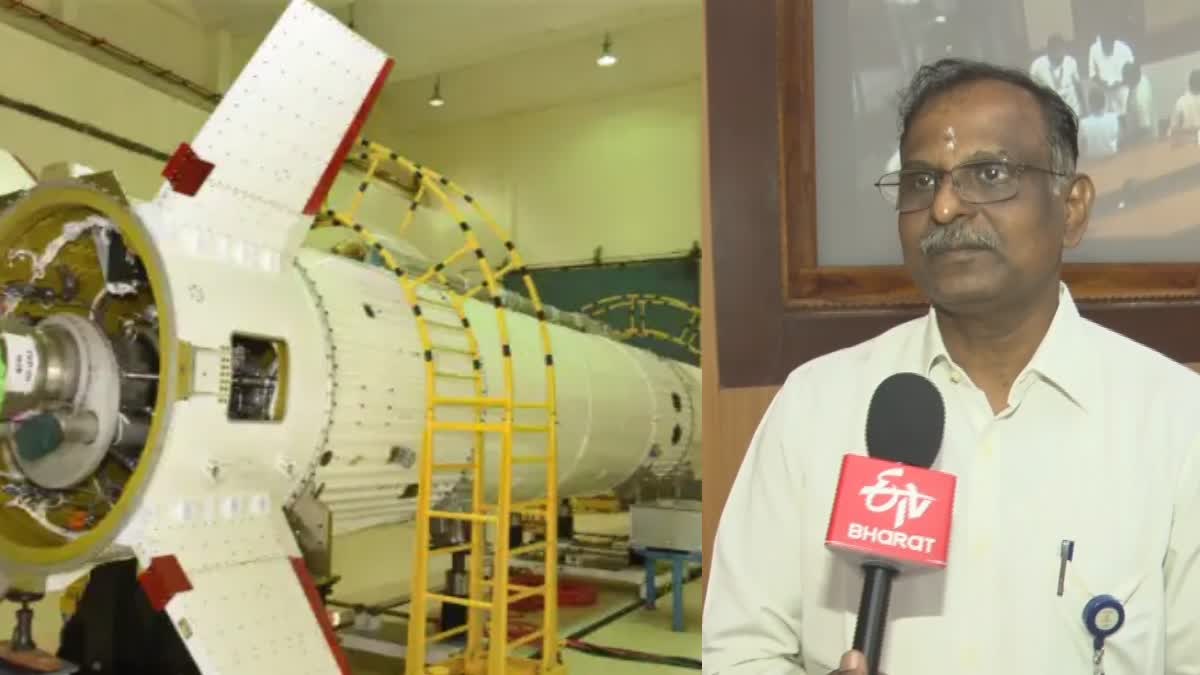Sriharikota (Andhra Pradesh): As Indian Space Research Organisation (ISRO) chairman S Somanath on Friday announced that the first test flight of the ambitious Gaganyaan mission, the first crewed mission of the country to space, will be launched in December this year, a senior scientist shared insights about the launch and its implications.
Here are the key takeaways of the ETV Bharat interview of Dr V Narayanan, Senior Scientist and Director of the Liquid Propulsion System Center at ISRO:
SSLV Rocket
Dr V Narayanan said that the SSLV, or Small Satellite Launch Vehicle, represents the sixth generation of launch vehicles developed by ISRO. Here is an overview of the evolution of ISRO's launch vehicles over the years:
1. SLV 3
2. ASLV
3. PSLV
4. GSLV Mark 2
5. LVM 3
6. SSLV
Currently, the PSLV, GSLV, and LVM 3 are operational with the SSLV now joining these as the fourth operational launch vehicle. Unlike the past launch vehicles, which are designed to carry heavier payloads—such as the LVM3, capable of lifting 8,500 kg to low Earth orbit (LEO) and 4,200 kg to high Earth orbit (HEO)—the SSLV is designed for more agile missions and can carry a maximum payload of 500 kg. This capability allows ISRO to rapidly prepare and launch the SSLV within a week for commercial satellite missions.
Gaganyaan Research
Among the key instruments deployed by the SSLV D3 is a Silicon Carbide-Based UV Dosimeter, critical for future human spaceflight under the Gaganyaan mission. The instrument measures space radiation, an essential factor in ensuring astronaut safety during space travel.
Gaganyaan Mission Progress
The Gaganyaan project is the first crewed Indian mission to space and aims at sending three astronauts into space in a compact yet robust space capsule. It will orbit the Earth for a minimum of three days before returning and landing in the Indian Ocean. The mission has three main stages:
1. Human-Rated Rockets: The rockets involved, including the Solid Engine, Liquid Engine, and Cryogenic Engine, have been tested and are ready for human spaceflight.
2. Orbiter Module: The manned Orbiter Module is under development, with work progressing rapidly.
3. Crew Escape System: Testing of the Crew Escape System was successfully conducted last year. By the end of this year, ISRO plans to send the robot Vyomithra for testing. Two additional unmanned rocket launches are scheduled for next year, with the ultimate goal of sending humans into space.
Kulasekaranpatnam Launch Pad Development
The new rocket launch pad at Kulasekaranpatnam is expected to be operational within two years. Due to its proximity to Sri Lanka, launches from this site will primarily target polar orbits. If a trajectory requires flying over Sri Lanka, adjustments will be made to the flight path, potentially reducing the payload capacity.
- Read more: 'Need To Develop Skills to Go Far Beyond Earth's Orbit': ISRO chief Somanath at IADC Meet
- OTD: When Rakesh Sharma Said 'Sare Jahan Se Achcha' From Outer Space
